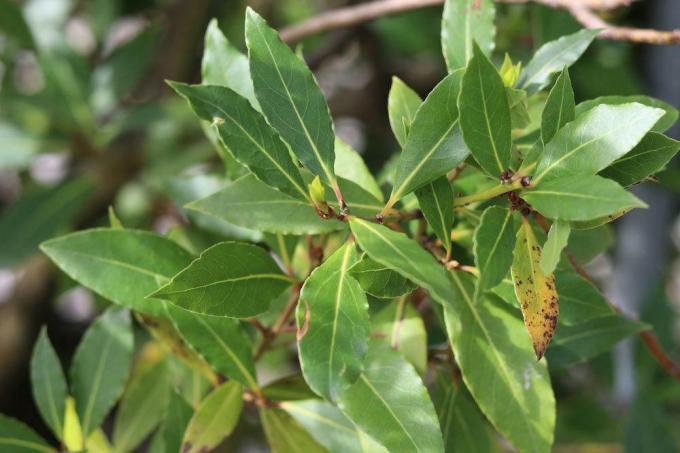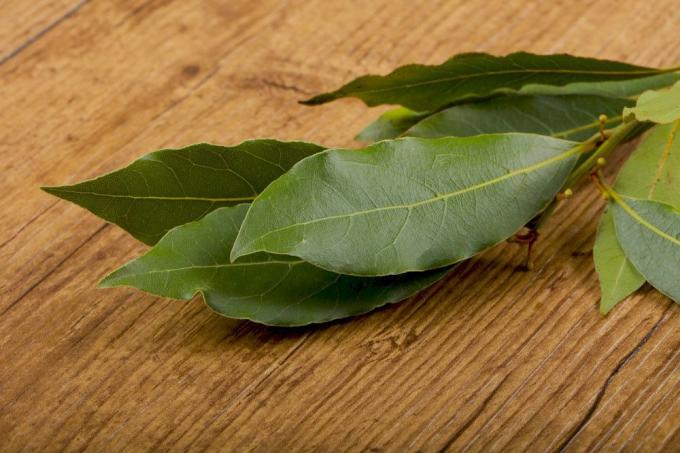
table of contents
- Stunted growth and shedding of leaves
- Brown leaves
- Shotgun Sickness
- Pests in winter quarters
The spice laurel is becoming more and more popular, also as a real one laurel known in the local gardens. Because the bay leaves can be harvested and used as a spice in the kitchen. But what if there is discoloration on the leaves? Does the tree then have certain diseases or does it “only” have deficiency symptoms due to incorrect care? How to determine what is missing from the Laurus nobilis is explained in the following article.
Stunted growth and shedding of leaves
If the spice laurel does not grow properly or if the actually evergreen tree suddenly sheds its leaves, then these are usually not pests, but rather Diseases due to improper care. This is how stunted growth or leaf shedding occurs in the following circumstances:
- Location too shady
- too wet, heavy soil
- Roots rotten easily
In such a case, the remedy is immediate Change of location. A laurel cultivated in a bucket immediately gets a sunny place. A laurel that has been grown in the garden bed is carefully dug up. Damaged, rotten roots are removed and the Laurus nobilis is used in a different location with a different substrate. The earth should be permeable here, no more waterlogging should form.

Brown leaves
If the bay leaves turn brown, the plant is showing that it is not doing well. Possible causes for this can be Waterlogging or dryness be. If too much moisture is responsible for the brown leaves, the only thing that helps here is to take the laurel out of the earth and cut off the roots that have already been damaged. Then the spice laurel is planted in new, permeable substrate after a short drying time. If it is dry, the plant must be watered well. Regular watering must then be carried out afterwards. You should also proceed as follows:
- remove brown bay leaves
- Cut back empty branches and shoots
As a rule, the spice laurel sprouts again in spring and summer after being rescued. If this does not happen and more and more bay leaves turn brown, then the tree has been so badly damaged by drought or too much moisture that it can no longer be saved. Root rot, in particular, is a disease that needs early treatment.
Shotgun Sickness
If there are small, brown or yellow dots on the otherwise green leaves, then the spice laurel is probably on the Fungal disease Shotgun sick. In such a case, action should be taken immediately, otherwise the plant is no longer suitable for use in the kitchen. If the points occur, the following should be acted upon immediately:
- Reduce nitrogen fertilization
- remove any affected bay leaves
- do not add to the compost
- Dispose of with residual waste
- Otherwise, fungus will spread throughout the garden
- spray with fungicides in an emergency
If fungicides are used, the spice laurel should no longer be used in the kitchen for the following year. Because even if the bay leaves are washed well before being used as a spice, remnants of the fungicide may still have stuck. Therefore, it makes more sense to harvest newly formed bay leaves that have not been sprayed with the fungicide until the next year.

Pests in winter quarters
Since the spice laurel is only partially hardy, it is usually recommended to put it in a warm and bright place in the local latitudes in winter. But it is precisely here that the Laurus nobilis, which is otherwise not often afflicted by pests, is particularly susceptible to them. In its winter quarters it is often attacked by mealybugs, scale insects and spider mites. You can proceed as follows:
- move to winter quarters as late as possible
- back outside as early as possible
- Temperature in winter only up to 8 ° C
- Infestation is shown by fine webs
- blotchy leaves can also be a sign
- Collect sitting insects
- can also be washed off with soapy water
- Spray the spice laurel with the hose
Due to the consumption of the tasty bay leaves in the kitchen, they should not be sprayed with an insecticide. Because even if you wash it off before using it in the kitchen, it is usually not completely removed and can then cause intolerance when consuming the dishes seasoned with bay leaves.

